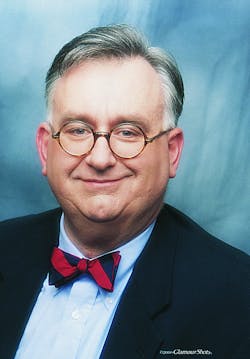Command Post: Going for the Gold: Organizational Theory
Many times over the past few decades, I have discussed theories as to how people should function within the organization we all know as a fire department. But just what is an organization? All fire officers, regardless of their rank, must know just what an organization is, how it functions and what his or her role in it is.
Defining organizations
Based upon my particular personal course of study, I have chosen to define an organization according to my favorite organizational text, Organizations: Behavior, Structure, Processes. From the book, an organization can be defined as, “that pattern of ways in which a varying number of people, too many to have face-to-face contact with all others at all times and engaged in a complexity of tasks, relate to each other in a conscious systematic establishment, for the accomplishment of mutually acceptable goals.” Well my friends, so much for the textbook answer to the “what is an organization?” question.
I have come to define an organization quite simply as a bunch of people working together to reach the same goals. Let us consider our particular circumstances. You are all fire people, so you should be part of an organization that works on fire-related matters and strives for the fire-type goals.
Historically, we, as a society in general, have moved from the days of the individual craftsman toward the more productive concept of work groups. However, as the number of people in the working equation increases, the problem of coordination and cooperation increases. One of the major problems faced by any organization involves getting the people in your organization to agree on mutually acceptable goals and work harmoniously toward those goals.
In our business specifically, the job of fire extinguishment cannot be done by individuals. It takes all sorts of people performing their separately defined tasks to get the job done. For the past five decades, I have seen first-hand how we must combine the efforts of engine, truck and rescue people, EMS workers, police, supervisors and a great many others to ensure that a fire department gets the job done. We are always struggling to ensure that what we do meets the needs of our user group: the citizens of our community. Without a team effort, success on the fireground would only be a matter of luck, trial and error.
Authorities in the management field have long since determined that the fire department is a type of organization that follows the scalar principle. This type of organization is one wherein orders are issued at the top and travel downward through a chain of command to those who will obey them.
Getting specific
Although it is my intention to delve more deeply into each of the various organizational aspects in upcoming editions of this column, at this time, let’s stay focused on the basic definitions. According to Organizations: Behavior, Structure, Processes, an organization is made up of three distinct areas:
- Structure
- Process
- Behavior
Structure is defined as that set of fixed relationships resulting from a determination of:
- Job definitions—the breakdown of work into its parts.
- Departmentalization—the grouping of like tasks and functions
- Span of control—how many people report to a given boss
- Delegation—the movement of authority as close to the source of the decision as possible
Further, there are two very important processes that you must master if you intend to run an effective organization: 1) communications—the placement of your thoughts into the mind of the person with whom you wish to communicate and 2) decision-making—the choice of actions in response to a problem, based upon a given set of circumstances. Without an understanding and mastery of these topics, you will not have one chance in a million of success in any organizational efforts.
Understanding why it matters
It is important that you understand how and why people act and react to you as they do. Each of us is a unique being, and if you, as a supervisor, fail to understand how this business works, you are doomed to failure. Each person works for you based upon a set of reasons unique to that person. You must be able to determine what these overall reasons are and respond to your people in a correct and effective manner. This will be part of a future column. Stay with me as I work to help you go for the gold.

Dr. Harry Carter
HARRY R. CARTER, Ph.D., who is a Firehouse contributing editor, is a fire protection consultant based in Adelphia, NJ. He is chairman of the Board of Commissioners in Howell Township Fire District 2 and retired from the Newark, NJ, Fire Department as a battalion commander. Carter has been a member of the Adelphia Fire Company since 1971, serving as chief in 1991. He is a life member and past president of the International Society of Fire Service Instructors and life member of the NFPA. He is the immediate past president of the U.S. branch of the Institution of Fire Engineers (IFE) of Great Britain. Carter holds a Ph.D. in organization and management from Capella University in Minneapolis, MN.
Connect with Harry:
Email: [email protected]






